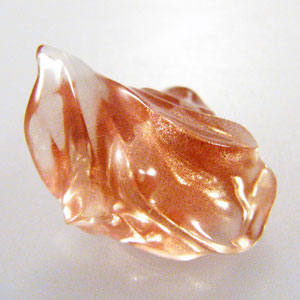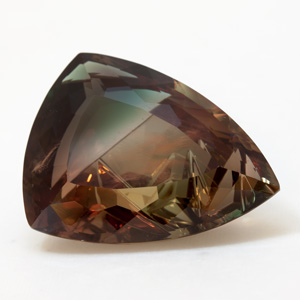oligoclase
Oligoclase, an elegant and lesser-known gemstone, takes its name from the Greek words "oligo," meaning few, and "klasis," referring to cleavage, signifying its limited tendency to cleave. This feldspar mineral, commonly associated with sunstone, is composed of sodium and aluminium silicate.
Oligoclase's geological origins are tied to igneous and metamorphic rocks, where it forms as a constituent mineral. Notable sources include Norway, Madagascar, and the United States.
What distinguishes oligoclase, including the sunstone variety, is its delicate play of colours, often displaying a shimmering optical effect known as aventurescence. This optical phenomenon creates a soft, ethereal glow, which is highly prized and admired in the world of gemstones.
Oligoclase, although less renowned than some of its gemstone counterparts, possesses a unique charm, combining its captivating name with its rarity and distinctive optical qualities. This makes it a gemstone of intrigue for collectors and connoisseurs of fine gems, especially for those who appreciate the allure of sunstone-like adularescence.
Click on the terms in the table below to discover their meaning



Click on the terms in the table below to discover their meaning
| Name | Oligoclase |
|---|---|
| Category |
Tectosilicate |
| Chemical Formula | NaAlSi3O8 |
| IMA Symbol | Olg |
| Crystal System | Triclinic |
| Crystal Habit | Uncommonly flattened and tabular; commonly cleavable to compact, massive |
| Twinning | Typically twinned according to the Albite, Carlsbad, and Pericline laws |
| Cleavage | Perfect / Good / Poor |
| Fracture | Conchoidal to uneven |
| Tenacity | Brittle |
| Hardness (Moh's Scale) |
6 - 6.5 |
| Specific Gravity | 2.63 - 2.66 |
| Diaphaneity | Transparent to translucent |
| Colour | White, may be tinted grey, green, red; colourless in thin section; may exhibit opalescence or schiller iridescence |
| Streak | White |
| Lustre | Vitreous to pearly |
| Optical Class | Biaxial (+) or (-) |
| Refractive index | nα = 1.533 - 1.545 |
| nβ = 1.537 - 1.548 | |
| nγ = 1.542 - 1.552 | |
| Birefringence | δ = 0.009 |
| Dispersion | Rd = 0.013 |
| Pleochroism | Absent |
| Clarity | Type II |
| Notable Varieties | Sunstone, Oregon Sunstone |
References
Mineralogical Society of America. (2001). Oligoclase. In J. W. Anthony, R. A. Bideaux, K. W. Bladh, & M. C. Nichols (Eds.), Handbook of Mineralogy. Chantilly, VA 20151-1110, USA: Mineralogical Society of America. Retrieved from https://
Mineralogy Database. (2012, September 5). Oligoclase Mineral Data. Retrieved from Mineralogy Database: https://